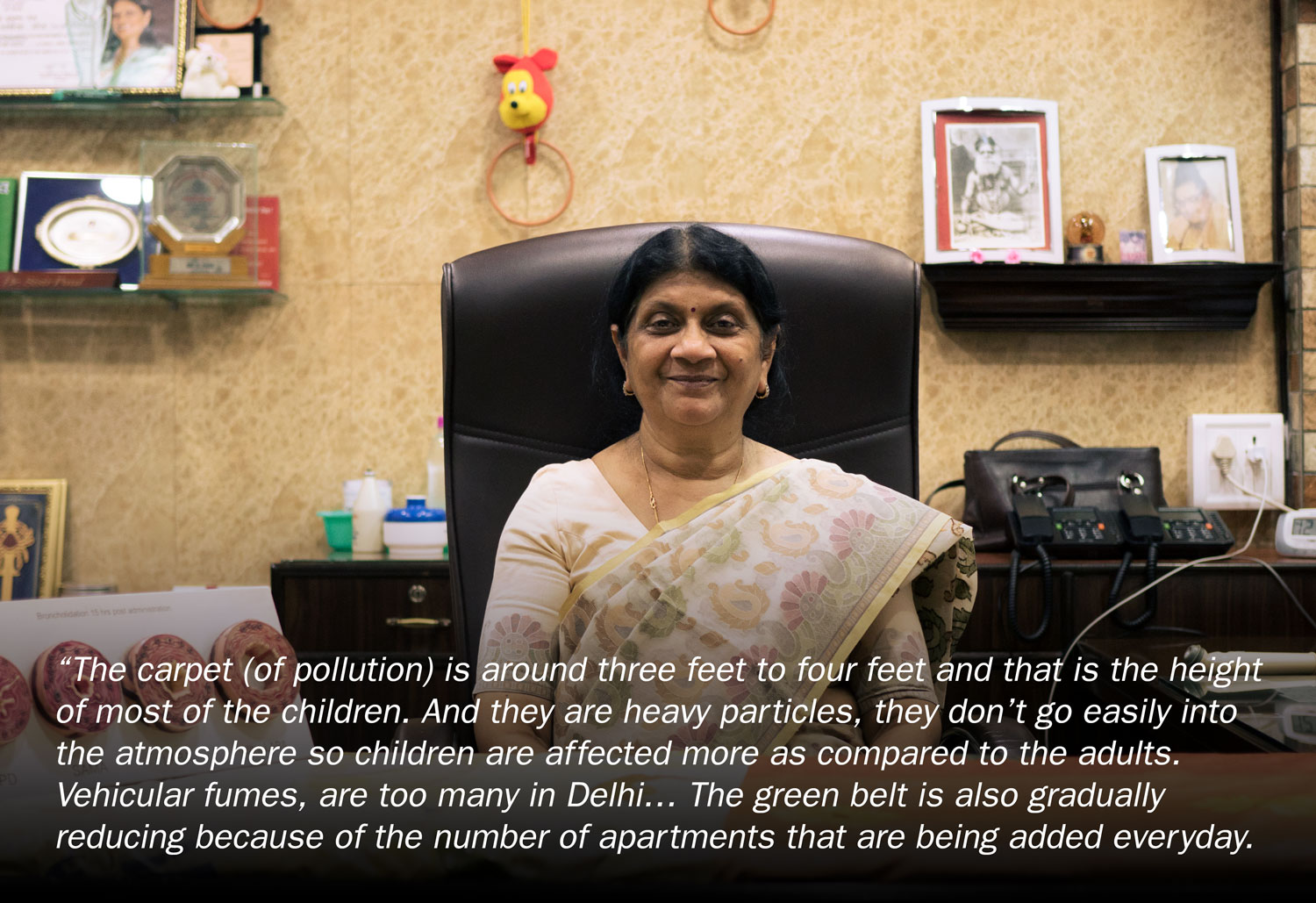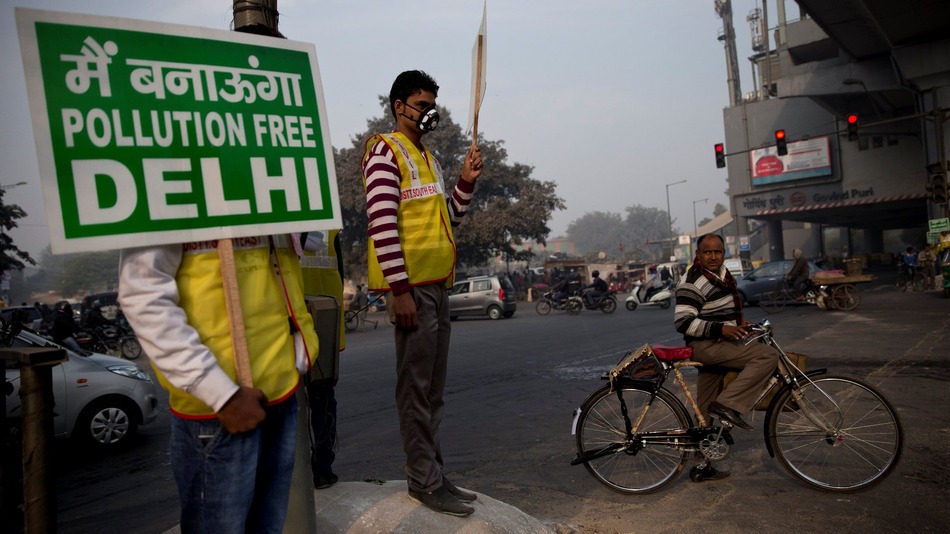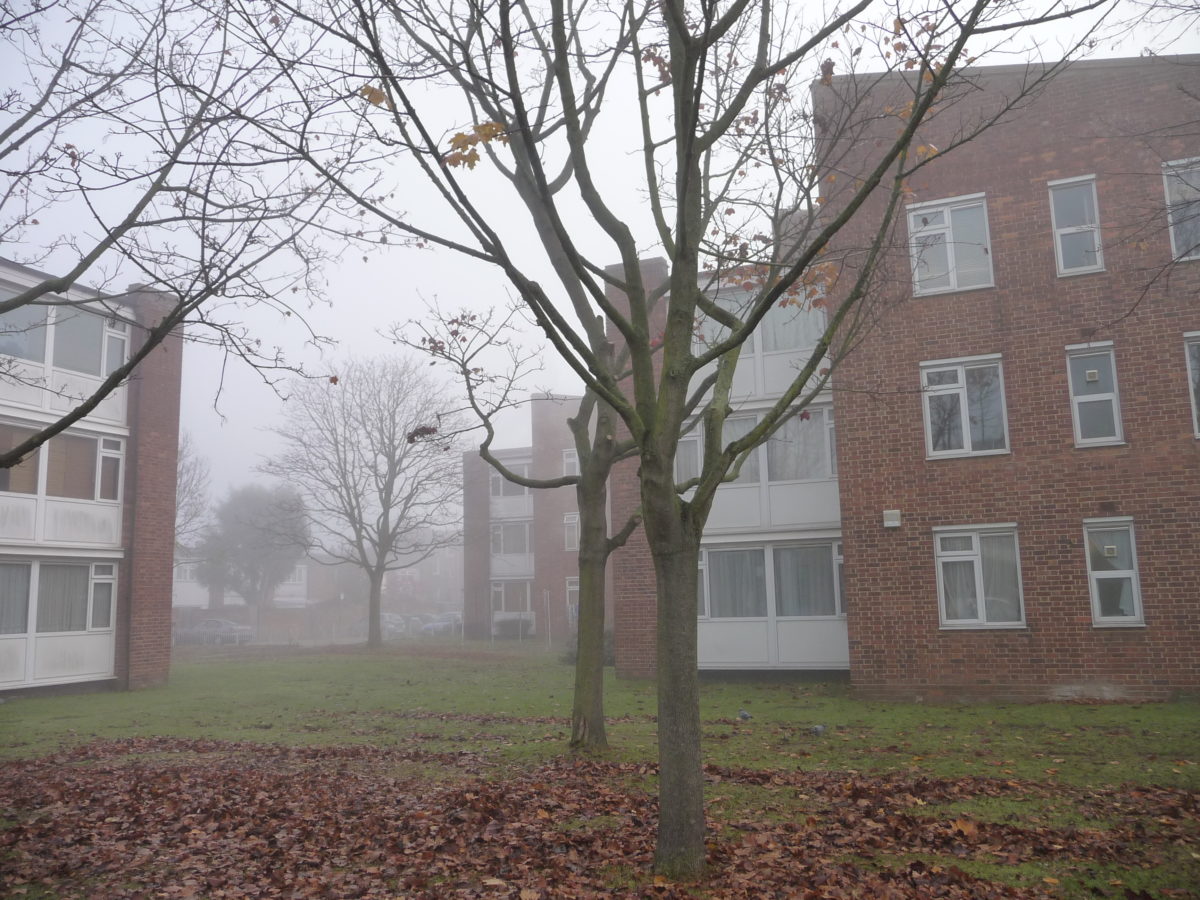
Worldwide, around 18,000 people die every day as a result of air pollution. About one in four premature deaths in India have been linked to one or other type of pollution, accounting for around 2.5 million people in 2015. But the problem is concentrated in cities, mostly related to the burning of fuel, and New Delhi has one of the biggest challenges with some of the poorest air quality.
But, if Delhi has the worst air pollution of any of the world’s big cities, it shares with other cities the struggle to tackle the problem – and the fraught conversation about why the air is so bad to begin with. In London, the causes are relatively agreed – it is obviously motor traffic. In Delhi, there are other factors at play, dust and smoke from the local power station, cooking and the burning of crops in the farmland surrounding the city, and rubbish. The fact that there are other culprits to blame means that the various interests involved can battle it out in public, and urgent action gets tested and then abandoned.
There have been bold initiatives in Delhi, including the even-odd registration plate scheme that allowed only one half of the car population into the city on consecutive days. This had a dramatic effect, and although it was abandoned due to the furore that followed, it is back on the agenda in the wake of particularly bad recent smogs. Meanwhile, the permanent damage to children’s lungs continues.
Officially, Delhi is now kerosene free and most households use LPG for cooking. One 2014 report said air quality in India has declined by 100 per cent over the last decade, with the contributions from motor traffic increasing – especially lorries. In spite of positive steps like the switching of public transport to cleaner fuel, pollution is getting worse again and is responsible for 10,000-30,000 annual deaths according to India’s Centre for Science and Environment (CSE). In November 2017, all the city’s schools were closed in response to the descent of worsening smog.

There have been further measures to cut vehicle emissions, and very specific initiatives like the banning of fireworks at Diwali, which coincides with the time of year when the smogs happen, a period recently dubbed the ‘Fifth Season’. Now the political stand-off may be shifting again, after the trauma of Delhi’s Great Smogs in 2016 and 2017.
The situation is better in London, but mobilising action remains a challenge. An estimated 9.400 people still die prematurely in the city each year as a result of exposure to fine particulate matter in the air and nitrogen dioxide, both principally from transport.
In 2016, the High Court in the United Kingdom ruled that plans to tackle poor air quality were “woefully inadequate”. The country as a whole was struggling to meet EU air quality regulations, resulting in the UK receiving a ‘final warning’ in February 2017, to comply with them or face being taken to the European Court of Justice.
The relationship between pollution and our bodies is a complex one. But strong and growing evidence suggests that bad air is a cause of reduced lung capacity, headaches, sore throats, coughs, fatigue, and premature death.

Air pollution is also now being linked to dementia and Alzheimer’s, as the smallest particles move through our lungs, around our bodies and have been found in the brain. Pollution also increases our risk of getting lung cancer and it’s bad for our heart and blood vessels. There’s a strong link between poor air quality and asthma, and evidence that all the organs in our bodies are affected by it in some way.
We know people’s lives are being shortened and their freedoms constrained.
London’s authorities are aware of the dangers and are thinking hard about technological change, to electric cars and taxis, and how to reduce van deliveries or collect better data. But the sheer scale of the problem has not yet been faced.
Although it often gets less attention, air pollution today causes more deaths than malnutrition, obesity, alcohol and drug abuse, and unsafe sex according to the Global Burden of Disease project.
Too often, the human cost and impact of air pollution is not seen. This initiative, and Smog Day, are about hearing those stories and making this insidious issue as visible as possible until policies, attitudes and behaviour change to make damaging air pollution a thing of the past. We all stand to gain by clearing the air for the future.

